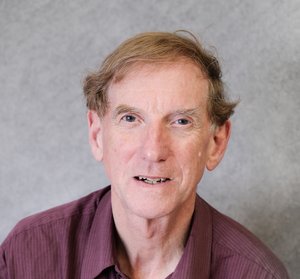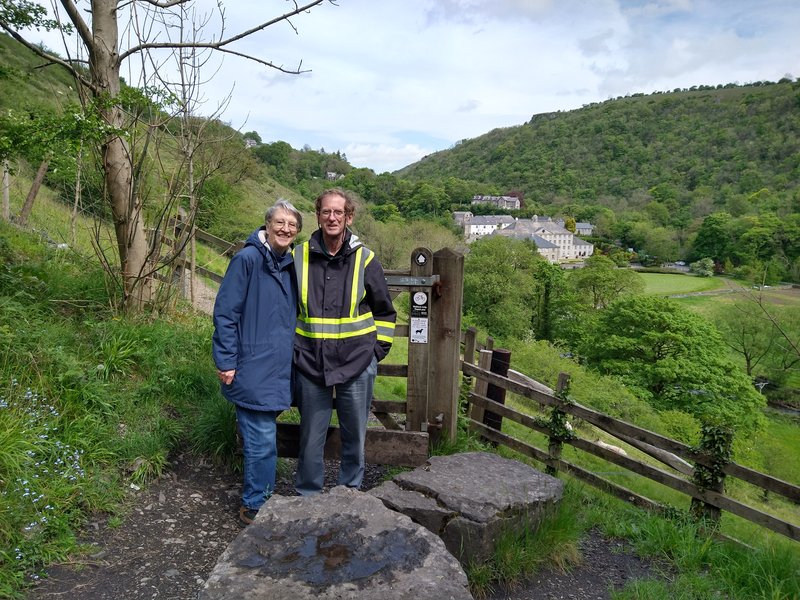Welcome to the Emeriti Profile where we ask one of our emeritus faculty questions about their careers and what they have being doing since retirement. Is there a faculty member whom you recall from being a student and are wondering what they are up to? Do you have fond memories of a certain instructor? Tell us who they are and we will try to connect with them for an update.

How many years you were a faculty member in the department of Physics?
1979 – 2006
Can you tell us about your educational background from your undergraduate degree to your PhD?
I studied at Oxford University, Jesus College. I read Physics from 1969-1972. My next degree was a D.Phil. from 1972-1979 under the supervision of John Houghton who was one of the pioneers of the Intergovernmental Panel on Climate Change (IPCC).
What was your PhD on and why?
My thesis was about a balloon program to measure nitrogen oxides in the stratosphere, which was of interest because of a controversy over the destruction of the ozone layer due to nitrogen oxides from the Concorde supersonic aircraft. At that time it was speculated that there would be a fleet of Concordes flying eight hours every day – remember that this was before the first 1970 oil crisis.
My thesis project was to help construct an instrument and fly it on a balloon in the South of France - in summer no less!
My thesis was nearly done in late 1975, when I was asked to pause it and work on a satellite instrument (I got paid for it!) which became the SAMS instrument in the Nimbus G satellite, and so I only got back to my thesis in 1977 to write it up and pass the viva (exam).
What kind of physics did you teach? And why?
I used to teach electricity, electronics, atmospheric radiation, and the laboratory courses. Why? – because I can’t do theory! I also love tinkering with things and making things work.
I also like to think about how we do things. I used to occasionally give talks about how we could quickly figure out how to fix a computer program, instrument, etc. that didn’t work and talked about the process of devising tests and ensuring you understood the results. (The most difficult-to-diagnose dead instruments are those that blow the fuses immediately because you can’t do any diagnostics on them.)
I also used to think about how to present our results with colleagues and others and share the excitement of our research. This was in the early days when these were new thoughts. When the Department asked me to a seminar about this, I said that I would only do it if the first sentences of the abstract would be: “Have you ever fallen asleep in a physics lecture? Were you giving the lecture at the time?” Unfortunately, they took me up on it.
What are your fondest memories of being a faculty member in the U of T Physics Department?
The Geophysical and Atmospheric Physics daily coffee mornings were special. Connie was the person who made the coffee and tea. People actually came and talked face-to-face about science (and other things). I met Gordon West, Richard Peltier, George Garland, Nigel Edwards, and others. Even Tuzo Wilson made an appearance occasionally. Now that everything is “virtual”, it is really hard to get people to become a community. The room is still there, but the room is often empty.
My major in-house project during the time I was in Toronto was the Measurements Of Pollution In The Troposphere (MOPITT) which started in 1987. The main instrument was built by COMDEV in Cambridge down the road, and we built a test chamber and clean room in the basement. The test chamber is still there because no one knows how to get it out! MOPITT was launched on the Terra satellite on December 18th, 1999 – just before Y2K. That was a great time with high pressure to make things work. Paul Chen was the main technician and many other faculty, graduate students and undergraduate students participated. Recently we counted up and found over 50 people who have been involved in the project. As of now, January 2023, MOPITT is still running.
Dr. David May and I also ran a difference frequency laser spectroscopy laboratory, and we produced a lot of papers, students, and memories.
In 2003, Dr. Kim Strong and I (and others) proposed The Polar Environment Atmospheric Research Laboratory (PEARL) in Eureka, Nunavut which is at 80N and 86W. We got a $6.9M grant from the Canadian Foundation for Innovation (CFI) and produced one of the few observatories so high north. Since the location is so isolated (no roads and so on), when everyone came to a campaign we were all together – faculty, technicians, and students together with one purpose. Those connections made between people then have continued even now. I have now passed the PEARL baton to Kim Strong and Kaley Walker and there are over 25 instruments still active there now.
How has the Physics Department changed since you were a faculty member?
Computers, e-mail, paperwork, and diversity – not in any particular order. When I started, there were few computers in the university. One was the central computer which had a terminal on the 12th floor with a line printer and a card reader. The high-energy Physics group had their own computer as well. Another was in the atmospheric Physics group so that we could connect to the Cray 1 in the National Center in Atmospheric Research (NCAR) in Boulder Colorado. We had a 50 Mbyte disk that cost more than $10,000 and was as big and noisy as a washing machine. There was a new “word processor” on the third floor coming in. Gradually during my time, we got more and more computers. During the 1990s, we had discussions about finding the funds so that we could have one computer for each group, then each faculty member, and then for each student. Now (almost) everyone has one in their pocket, and the idea of doing research without a computer is farcical.
What can I say about e-mail (and now “social media”)? It is like fire: good in its place and terribly destructive outside. I still work through my e-mail every day and some of it is useful, and the rest is not.
I think that the paperwork deluge was spawned by the computer revolution and e-mail. When I started, all paperwork had to be typed by a typist and this limited the paperwork. The circulation of a memo was limited by the number of carbon copies in the typewriter. Now we can circulate everything to everyone, but then we have difficulty sifting out the important things from the rest. Proposals were short and about the research. I remember equipment proposals with a two-page limit. Now proposals are often as much about the “rest” as about the science. All proposals are long and have to cope with ramifications far away from the science issues even sometimes to the exclusion of the science.
I also note that the mix of the Department has changed significantly. I arrived after the explosion of the faculty in the 1960s and around when I began there was a lull in hiring. Then everyone realized that we needed young people (by that time I wasn’t a young person) and they were hired through various means. Then it was realized that women were not properly represented, and efforts were made to recruit women and now there is a diversity effort to make the cohort more representative.
What have you been doing during your retirement?
Retirement – what’s that? I technically retired from the Department in 2006, but I immediately took up a Canada Research Chair in the Physics and Atmospheric Science Department at Dalhousie University in Halifax. Then I retired again in 2016 but have still been active in both the MOPITT project which is still running, and the PEARL project and have several virtual meetings every week.
Throughout my life, I have been involved in a church and am currently a member of West End Baptist Church. This is important to my life and well-being and connects with my concern about the climate.
I love doing things with my hands and my brain. At the end of my career, I did a lot of management and that got me away from doing more “interesting” things. I have finished a renovation at our house – although houses are never completed finished. I have been playing with some of these wonderful technical gizmos that have come along – raspberry pis and picos (those are really tiny computers and cost as little as $4) – 3D-printers - I have one in my basement - and I am also building a model railway in my basement. What would my first projects have been like if I’d had access to these toys, I wonder?

Anything else you would like us to know or share?
In 1987, I went to a seminar with Richard Hamming – Hamming codes, Hamming windows and others – with the title “How to be a Famous Scientist”. You had to go to a seminar with that title! The funny thing is that he made three points and even 35 years later I can remember them:
1) Work on the big problems: You won’t be successful if you only look at the small problems - think big thoughts and solve them.
2) Don’t have lunch with your colleagues: His point was the biggest advances are achieved by taking the knowledge that is well-known in some fields and moving it into another field. So have lunch with another group who don’t have your knowledge and share.
3) Take Friday afternoons to think deep thoughts. Take some time to reflect on important things rather than deal with the minutiae of life.

